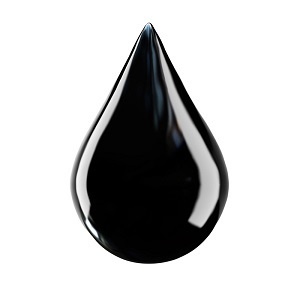Energy Sector Q3 Performance Report
 The best performing sector overall in Q2, the energy sector was the worst performing sector in Q3 with energy commodities falling 19.31% and gasoline the worst performing commodity. With prices affected by excess supply, weakened demand, economic concerns, geopolitical events and seasonal trends, the energy sector to date is the most volatile commodity sector of 2015, with activity from January through September adding to the previous 36.59% losses of 2014.
The best performing sector overall in Q2, the energy sector was the worst performing sector in Q3 with energy commodities falling 19.31% and gasoline the worst performing commodity. With prices affected by excess supply, weakened demand, economic concerns, geopolitical events and seasonal trends, the energy sector to date is the most volatile commodity sector of 2015, with activity from January through September adding to the previous 36.59% losses of 2014.
Crude Oil
NYMEX light sweet crude gave up almost all of its nearly 25% gains from Q2, falling 24.18% in Q3 and traded in a range of $37.75 to $64.12 per barrel during the first nine months of 2015.
Domestically, crude oil production in Q3 was above nine million barrels per day, but rig counts have been falling since November 2014 and are down to 640 from 1,592 a year ago. Look for these lower rig counts to drive down production below nine million barrels per day in the coming months.
The most volatile commodity for the past two years, geopolitical events and economic pressures in China and Europe throughout the quarter affected pricing. At the beginning of Q3, China’s stock market suffered deep losses that continued throughout Q3 and weakened crude oil demand in China—the world’s second largest crude oil consumer.
The energy commodity made a new low of $37.75 on August 24th, the day the central bank of China devalued the yuan—which only increased volatility—and then rallied almost 30% in a week, with NYMEX light sweet crude oil closing at $45.09 per barrel on September 30th.
Brent crude oil fell 24% in Q3 and from January through September traded in a range of $43.06 to $70.56. It closed on September 30th at $48.33 per barrel—a $3.24 per barrel premium to NYMEX light sweet crude—but 88 cents lower than where it stood at the end of Q2.
Looking ahead, crude oil could be in for more volatility in Q4. If the Fed raises interest rates, the dollar could rally and commodity prices could see new lows.
And keep on eye on action in the always-turbulent Middle East, as conflicts there could affect production and logistics and as a result, Brent crude prices.
Oil Products
RBOB gasoline tends to rally in the spring and summer and that proved to be the pattern for Q3 as prices lowered. The best performing commodity of Q2, gasoline was the worst performing commodity of Q3 with a 33.31% price decrease. Gasoline traded in a range of $1.2265 to $2.1857 per gallon from January through September.
Looking ahead, Q4 is traditionally seasonally weak, so expect depressed prices. And keep an eye on China, as fluctuations in the China economy could have a rippling affect on the price of oil.
Natural Gas
Natural gas prices were lower in Q3, falling 10.88% and traded from $2.443 to $3.352 from January through September with active month NYMEX natural gas futures closing at $2.5240 per mmbu on September 30th.
Inventories are above 2014 levels, with stockpiles as of September 18th, 15.7% above levels at the same time last year and 4.5% above the five-year average.
A volatile commodity, looking ahead to Q4, El Nino could have an impact on pricing, with any fall and winter weather-related events lowering demand and therefore prices.
Ethanol
Ethanol is a biofuel that is a product of corn. And unlike the price rise in Q2, corn prices moved lower in Q3 by 10.14% and ethanol prices moved accordingly—falling by 4.84%. Trading in a range of $1.3483 to $1.6750 from January through September, Chicago ethanol futures closed on September 30th at $1.5350 per gallon.
Moving forward, supply and demand of crude oil and economic factors will likely put pressure on biofuels. Ethanol prices are dependent on corn prices, so as corn values decrease or increase expect ethanol to follow accordingly.